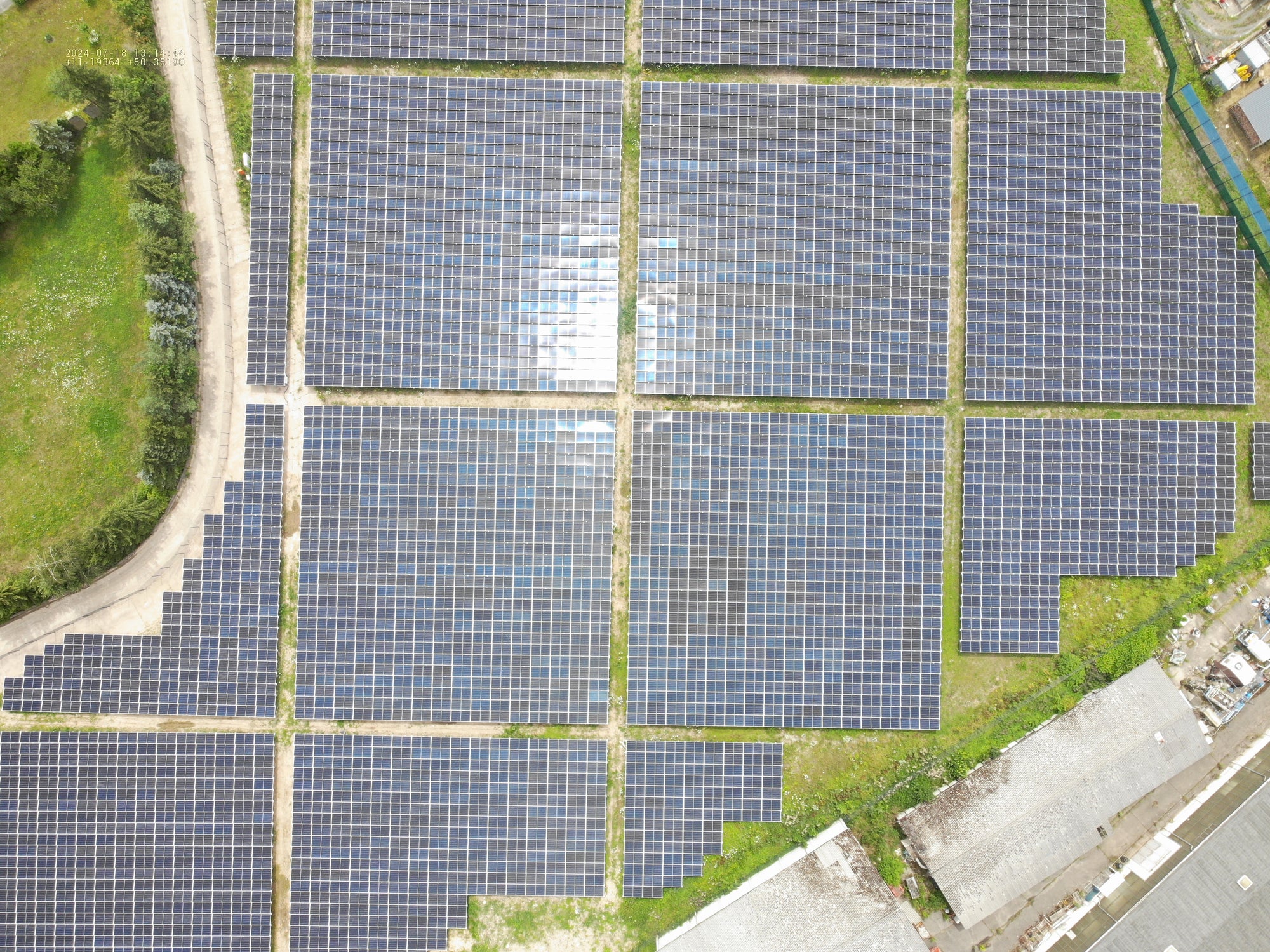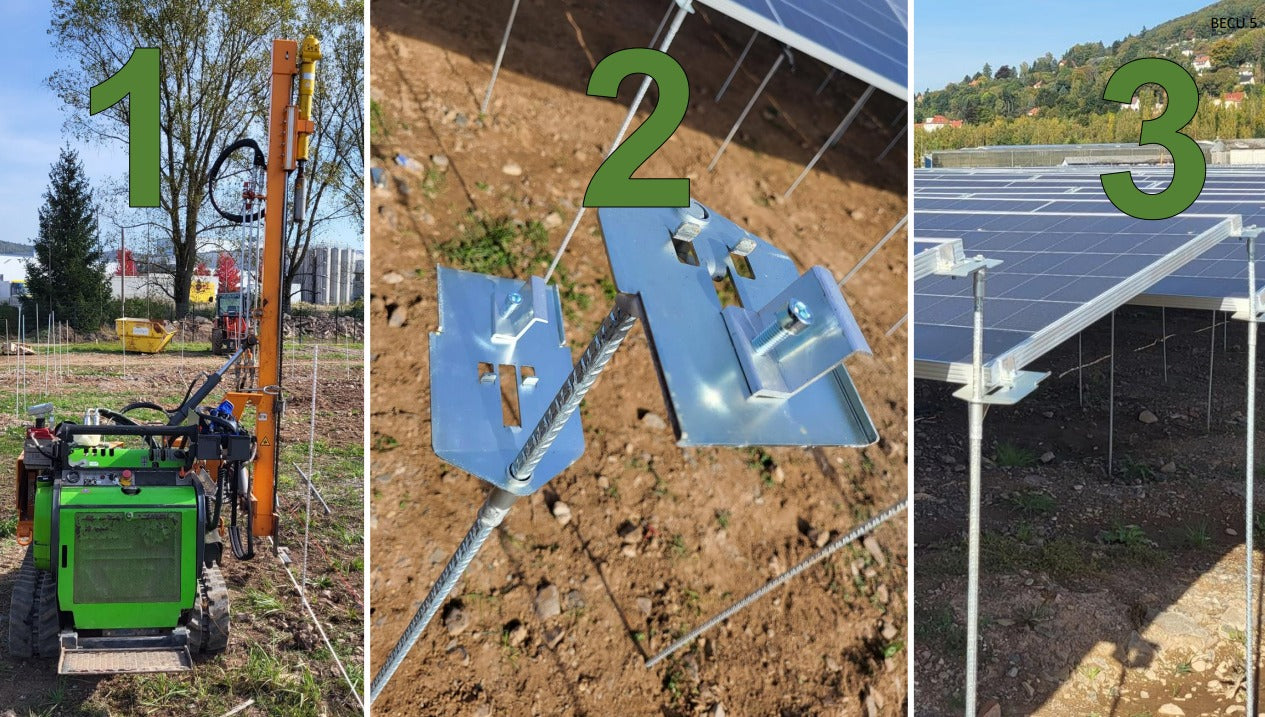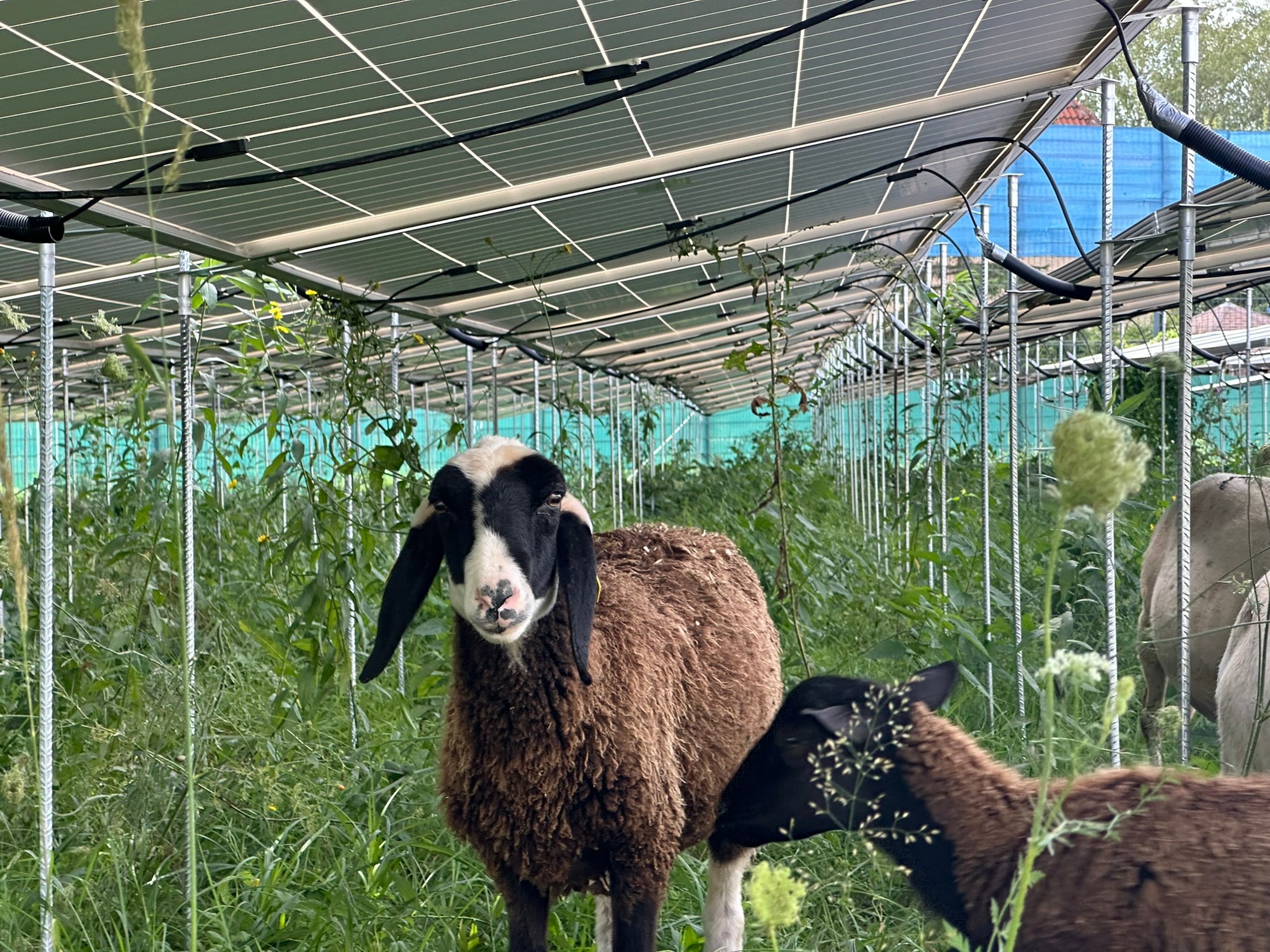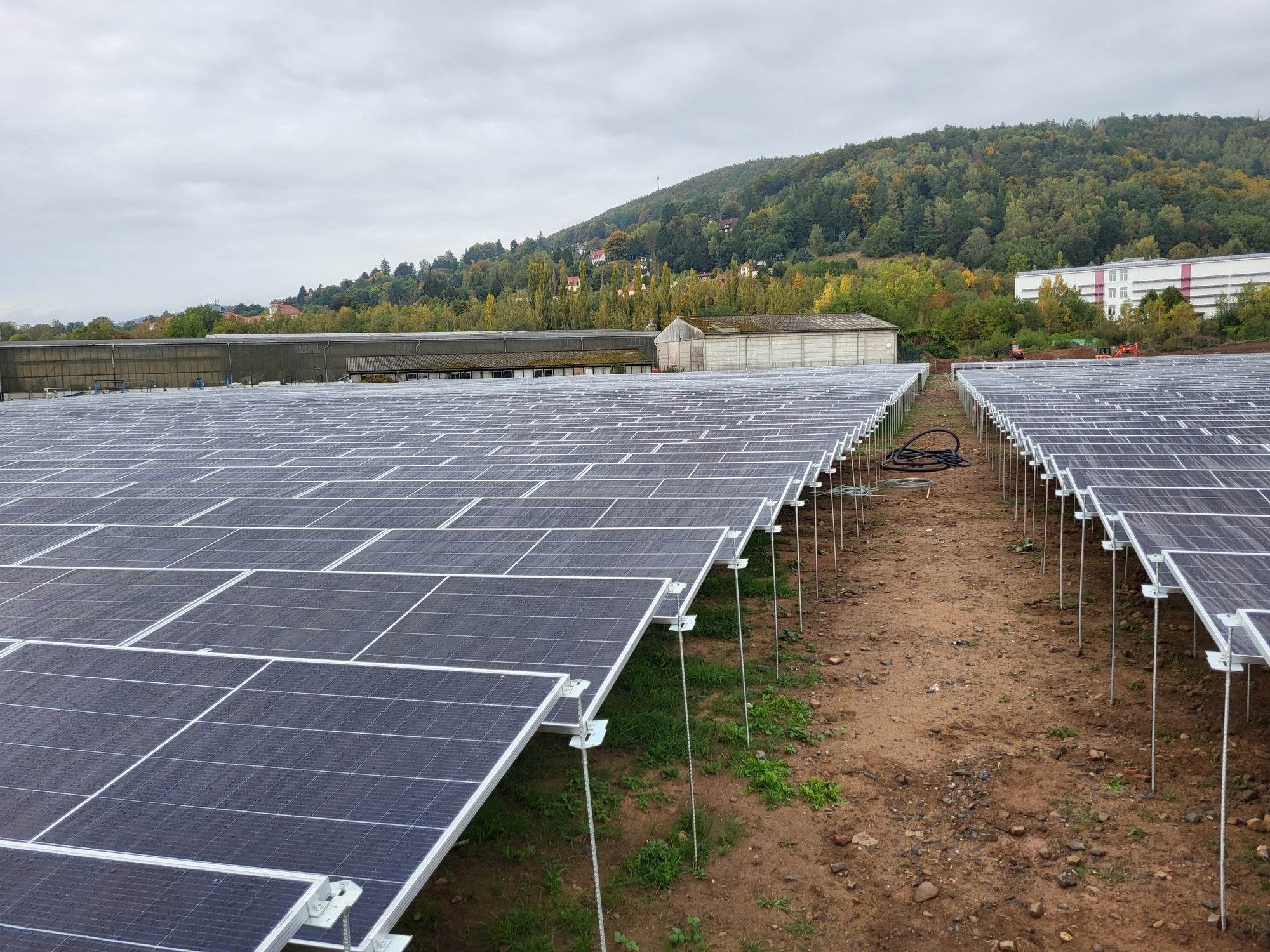- Cost efficiency: The BECU© substructure significantly reduces the overall cost of a solar project because it requires less material and fewer labor hours for installation. This allows for a faster return on investment and improves the profitability of the project.
- Time savings: By simplifying assembly and reducing the need for heavy machinery, the BECU© substructure can significantly reduce the installation time of a solar project. This enables faster commissioning of the system and shortens the time to first energy production.


3. Flexibility: The BECU© substructure is extremely flexible and can be adapted to different terrain conditions. This allows versatile use of the substructure for solar projects at different locations and in different environments.
4. Sustainability: The BECU© substructure minimizes the consumption of materials and resources and thus reduces the ecological footprint of a solar project. By using galvanized reinforcement bars and reducing concrete foundations, the BECU© construction contributes to the sustainability of the project.
5. Increased yields: The optimized orientation of the PV modules on the BECU© substructure enables maximum use of solar energy and increased energy production. This leads to higher yields for the system operator and improves the overall profitability of the solar project.
Why did we develop the BECU© substructure?
The structure

Possible uses
Agri PV use
The BECU© substructure can be installed as low-agri-PV (photovoltaics in combination with agricultural use):
- Optimum use of space: The BECU© substructure minimizes soil sealing and enables optimal use of agricultural land. By using galvanized reinforcement bars as supports, the soil is only minimally sealed, which means that the area is largely preserved for agricultural purposes.
- Protection against the effects of the weather: The PV modules on the BECU© substructure offer additional protection against the effects of the weather such as hail, heavy rain or intense sunlight. This can help to improve the quality and yield of agricultural products and secure crop yields.


3. Improved soil irrigation: The arrangement of the PV modules on the BECU© substructure ensures uniform soil irrigation. The rainwater can flow off unhindered and spread evenly over the soil, which leads to an improved water supply for the plants.
4. Additional source of income: The integration of PV systems on agricultural land offers farmers an additional source of income by feeding solar power into the grid. This can help to increase the profitability of agricultural businesses and contribute to the profitability of the overall operation in the long term.
5. Environmentally friendly energy production: The combination of PV systems and agricultural use contributes to environmentally friendly energy production and supports the sustainability of agricultural businesses. By using renewable energies, farmers can reduce their carbon footprint and contribute to climate protection.






